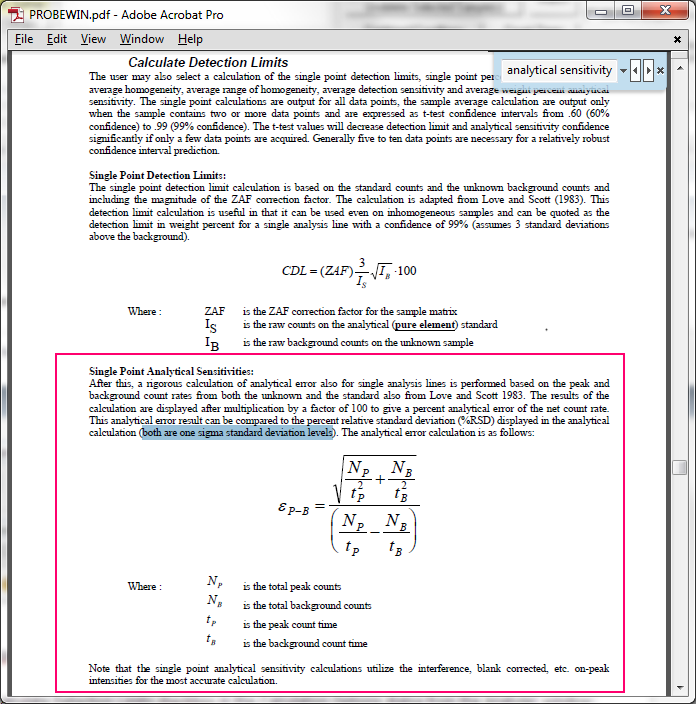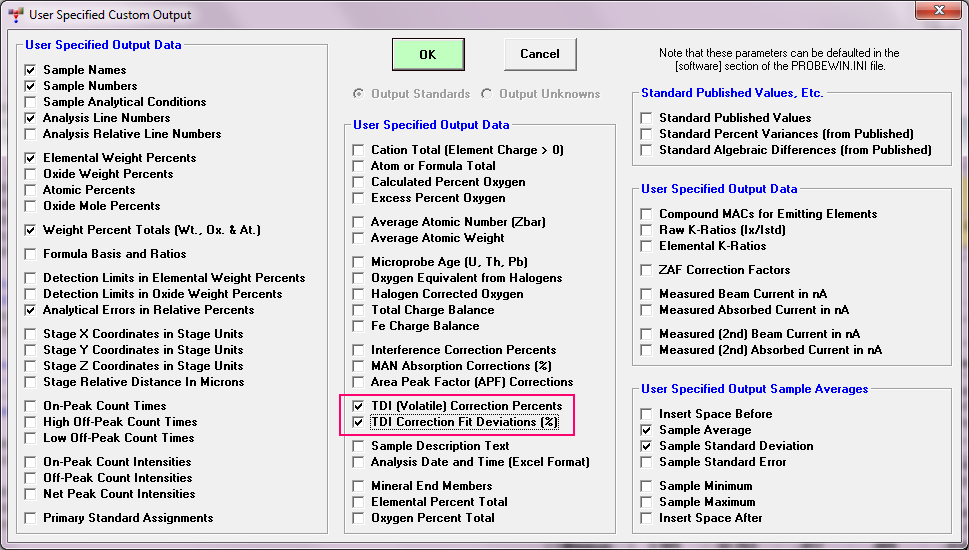Hi Ben,
Ah, OK.
So as you know, these are the analytical sensitivities calculated using the method of Love/Scott, as seen here from the PFE Reference manual:

These analytical sensitivity errors are basically a sort of peak to background estimation which according to Love/Scott are predictive as to knowing that two numbers are statistically different from each other, as opposed to simply variances in the counting statistics.
In our implementation of this equation we utilize any corrections that have been applied to the raw data that changes the net intensities, in order to be somewhat more accurate in the analytical sensitivity estimates. This includes changes to the net intensities due to the spectral interference, APF, MAN and TDI corrections (and probably a few other corrections).
Now if I pick a (very) beam sensitive sample, specifically the NIST K-375 glass, and output the results *without* the TDI correction I get these results:

Note that the Na and Si average analytical sensitivity errors are 1.550108 and 0.463727 respectively. Now with the TDI correction turned on I get:

Now note that the average analytical sensitivity errors are now 0.724499 and 0.474985 respectively. They are smaller for Na because due to the slope of the TDI corrections, so the net intensity was increased and the analytical sensitivity improved, because the peak to bgd improved. And for Si, the net intensities were instead decreased, because of the different slope for the Si TDI corrections. That is, due to the TDI corrections, the Na P/B increased (a lot), but the Si P/B decreased (slightly).
So I cannot explain why you are not seeing much of a change in your analytical sensitivities from the TDI corrections, unless your TDI corrections are very small.
You asked about the TDI fit deviation and the answer is that the variance due to the regression scatter in the TDI plot is not applied in this calculation. There are however several different options for outputing the TDI correction magnitude and fit variance as seen here:

I would have to think if there is a way the TDI fit variance could be applied to the analytical sensitivity calculation, but in the meantime you might want to look at the output from the Output | Save Time Dependent Intensities menu. This output option saves a lot of parameters utilized in the TDI corrections to a tab delimited file. I know several users have leveraged this information in their own TDI studies.
By the way, this variation in the TDI correction from point to point is exactly why the "assigned TDI" (as opposed to the "self TDI") correction was created. Basically Ian Carmichael at UC Berkeley wanted a TDI correction that utilized a constant slope TDI correction for each data point in a sample, so that he could be sure that the variation between data points was due to the composition changing, as opposed to the statistics bouncing around from one data point to the next.
The reason almost nobody uses the "assigned" TDI correction is that due to all kinds of different ion migration physics, even a fairly homogeneous sample can show statistically significant variation from one acquisition to the next.
https://probesoftware.com/smf/index.php?topic=116.msg454#msg454john